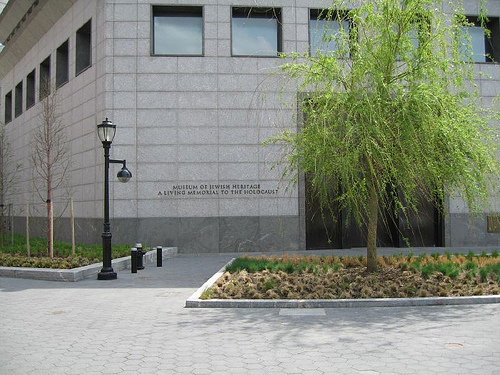
Photo Credit: http://www.flickr.com/photos/vippe/219795359/sizes/z/
MICHAL and I recently returned to Israel after a five-week trip to America. Unlike our previous visits of 8-15 days, this longer period allowed us to plan an extended road trip. We began our excursion in Chadds Ford and drove through the Middle Atlantic states to the Carolinas along the mountains and valleys abutting the Appalachian Trail, east to Charleston, then north along the eastern shore back to Atlantic City. Rather than writing a travelogue, I’ll tell you about some of the experiences we had which relate to being Jewish in America. In planning our trip, we decided that we would have a semblance of Shabbat. The day of rest and leisure activities which we have on Shabbat in Israel is one of the best things about living here. So we planned to be in two cities, Roanoke, VA and Charleston, SC, during the two weekends we’d be traveling. Our plan was to contact a synagogue in each of the above towns and ask if a family would host us on Friday evening. This turned out to be much more complicated than we had envisioned. Beth Israel Synagogue of Roanoke,VA is a conservative congregation founded more than a century ago, with a membership of about 160 family units. After a few fruitless emails to the congregation, we contacted the rabbi directly. It turned out that he had other things on his mind, mainly relocating to another city. But after a few more calls to the synagogue staff, we were fixed up with the Kaplan family for a kosher Shabbat meal. This turned out to be a fortuitous choice, because their son David’s counselor at Camp Ramah in the Poconos had been our son Moshe! We had a lovely evening with the Kaplans and their friends in their suburban home, and enjoyed a leisurely Saturday exploring the beautiful countryside surrounding Roanoke. While driving through North Carolina on the gorgeous Blue Ridge Parkway, we learned about Moses Cone. The beautiful Cone mansion is located on the Parkway, outside of Blowing Rock, in the vast Moses H. Cone Memorial Park. Cone and his brother, originally from Baltimore, established a vertically integrated textile empire at the end of the 19th century in this region. Eventually Moses turned over the reins of the company to his brother Caesar. Moses and his wife purchased 3,500 acres near Blowing Rock, including two mountains. Having no children, the Cones devoted themselves to philanthropy, especially in education. Their contributions to the state teacher’s college, which would later become Appalachian State University, greatly enhanced higher education in the mountains of Western North Carolina. Cone was also an environmental pioneer. He planted extensive pine forests and hemlock hedges, nurtured a passion for orchid cultivation, and planted a replacement tree for every one that was harvested.
Asheville, NC was one of our primary destinations, mostly due to the incredible Biltmore Estate, home to part of the fabulously wealthy Vanderbilt clan. We were surprised to discover a store-front Jewish heritage project throughout the center of town. A small, trendy city of about 70,000 residents, Asheville was once home to a Jewish population which dominated the retail sector of the economy. While reading some of the informative posters posted in shop windows by history@hand.com about Jewish life in western North Carolina, I tabulated the number of Jewish retailers in various periods. I found it hard to believe that in the period between the end of WWI and the start of the Depression, there were approximately 135 Jewish-owned retail establishments in what was a minor city in the mountains. Today, in Asheville as in most of America, Jews have gravitated more to the professions and there are relatively few shops still run by Jewish proprietors. Our attempts at finding home hospitality for Shabbat dinner in Charleston, SC were thwarted. We first tried to contact the conservative congregation via their website, but two attempts went unanswered. We then reached someone in the office by telephone, but after a few communications we were told that no one could be found to invite us to dinner. By this time we had investigated Kahal Kadosh Beth Elohim, which is the birthplace of Reform Judaism in the United States. The congregation was founded in 1749 by Sephardic Jews, who were then the majority of Jews in the New World. With the later influx of German Jews, the congregation reconstituted as Reform in 1841. Unfortunately, the fact that we are kosher seemed to intimidate the office staffer whom we contacted at the Reform congregation, so we were on our own for dinner. We attended services at the beautiful historic sanctuary and at the Oneg Shabbat (coffee and cake) after services, we met a number of very nice members. We couldn’t help but think that several of those congregants would have loved to have hosted a couple from Israel, had they been so asked. The neo-Classical exterior of Kahal Kadosh is impressive, resembling a Greek temple. When we walked the streets of Charleston, though, we saw similar buildings all over town. In Charleston, as in most locations worldwide, Jews build synagogues that blend in with the TRAVEL 21 local, formal architecture. We learned a lot about the Civil War and slavery during our trip. For example, our walking-tour guide told us that the Jews of Charleston, who constituted the largest population of Jews in North America before the Civil War, were also slave owners. About a third of the general population owned one or more slaves, a percentage that was the same for both Jews and gentiles.
On our way back north we stopped in Norfolk, VA. We took the opportunity there to tour the Moses Myers house, built in 1792. Myers and his wife Aliza moved from New York to Norfolk following their marriage, becoming the first Jewish citizens of Norfolk. Within five years, Moses Myers established a successful import-export business and became one of Norfolk’s leading personalities. The beautiful Georgian house that he built was a center for both cultural and more mundane events. Myers became the president of Norfolk’s common council, a major in the Virginia militia, consul from the United States to France, the Netherlands and Denmark, president of the Assembly Ball, superintendent of the Bank of Richmond and customs duties collector. The Myers family remained the only Jewish family in Norfolk for decades, where they retained their Jewish character without being obviously devout. Five generations of the family lived in the house until it was eventually acquired by the Chrysler Museum.
Our final tourist stop was at the Museum of Jewish Heritage located next to the beautiful Battery Place Park at the southern tip of Manhattan. We went there to see the exhibition “The Other Promised Land”. This show used artifacts from Atlantic City, the Catskills and Miami Beach (a ten-hour plane ride!), to illustrate how American Jews practically invented the middle-class vacation and the “allinclusive "holiday. We really enjoyed this particular exhibit, but were time-constrained from seeing other shows in the museum. Unfortunately, on several occasions during our whirlwind tour of southeastern America, it happened that we didn’t have time for all that we’d planned to see and do.
 News for Modi'in
News for Modi'in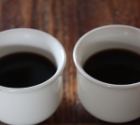 Esra Aid to the Blind Coffee Morning
Esra Aid to the Blind Coffee Morning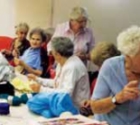 Netanya News
Netanya News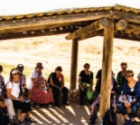 From Bible to Bedouins and Battles
From Bible to Bedouins and Battles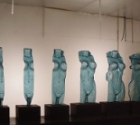 Trip to the Dead Sea
Trip to the Dead Sea Japan
Japan Steve Kramer
Steve Kramer